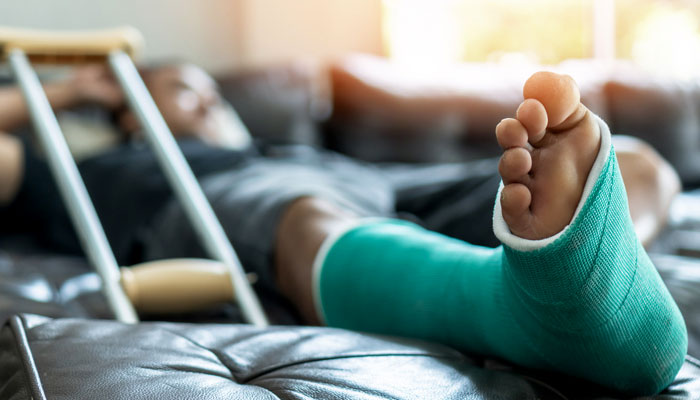
Fractures, commonly known as broken bones, can be of several different types. Recovery takes anything from a few weeks to several months depending on the severity of the fracture, and the best treatment varies. Mild bone fractures heal naturally without any intervention; severe bone fractures may need surgery, immobilisation and physiotherapy once healing has reached a certain stage.
A wide range of fracture types are recognised
- Complete fractures: the bone is broken into 2 or more separate parts; such fractures are severe. Complete bone fractures are classified by direction – transverse, oblique or longitudinal. They may also be spiral or winding.
- Open fractures or compound fractures: these are complete breaks in which a bone pierces the skin. Such bone fractures carry risk of infection and should receive emergency medical care.
- Closed fractures or simple fractures: the bone does not penetrate the skin.
- Incomplete fractures: the bone is cracked, but not separated into 2 parts. Hairline fractures are mild forms of incomplete fractures.
- Displaced fractures: complete fractures in which the bone fragments are misaligned. This usually needs to be treated using surgery to move the 2 parts of the bone back into place so they can heal.
- Comminuted fractures: the bone is smashed into several pieces.
- Greenstick fractures: the bone is cracked but the break does not extend completely through the bone. Greenstick fractures are so-called because they are like breakages caused to a ripe twig when you severely bend it. Greenstick fractures are most common in children, because their bones are more flexible.
- Buckle fractures: greenstick fractures in which the bone bends but does not break.
- Compression fractures occur when bone collapses and starts to break up. Most commonly seen in people with severe osteoporosis and seen in spine, Hip, shoulder and wrist.
- Avulsion fractures: a bone breaks because of an injury that causes extensive tearing of muscle and ligament.

